8 Major Stages of the Revenue Cycle in Healthcare
- August 22, 2025
- 0 Comments
- Revenue Cycle Management
Every healthcare practice depends on one thing to survive: getting paid for the care they provide. But payment doesn’t happen automatically. It follows a process called the revenue cycle, and when even one step in that process breaks down, it can cause headaches like denied claims, late payments, or lost revenue.
Think of the revenue cycle as the journey of a patient’s visit. It starts the moment someone books an appointment and continues until the final bill is paid. Along the way, there are several important steps that connect patient care to provider reimbursement.
In this article, we’ll go through the eight main stages of the revenue cycle, explain why each one matters, and show how small mistakes at any stage can slow down cash flow.
What Is Revenue Cycle Management in Healthcare?
Revenue Cycle Management (RCM) is the process that connects the care a patient receives to the payment a provider earns. It covers every step from the moment a patient books an appointment to the time the final bill is settled.
In simple terms, RCM makes sure providers get paid accurately and on time for the services they deliver. It includes tasks like patient registration, checking insurance, coding procedures, submitting claims, fixing denials, and collecting payments.
The 8 Main Stages of the Revenue Cycle
The revenue cycle is like a roadmap that shows how a patient’s visit turns into payment for the provider. Each stage builds on the one before it, and even small mistakes early on can create big problems later. Below are the eight main stages of the revenue cycle.
1. Patient Registration and Scheduling
This is where the revenue cycle starts. A patient books an appointment, and your team collects the basics: full name (as it appears on the insurance card), date of birth, address, phone and email, insurance plan name, member ID, group number, and the reason for the visit. If there is a referral, capture the referring provider’s details too. Ask for a clear photo of the insurance card, front and back.
Accuracy here protects your cash flow. One wrong digit in the member ID or a misspelled last name can cause a claim to bounce back. That means rework, delays, and extra calls your staff could have avoided. Good scheduling also helps. Confirm the visit type, provider, and location, and send reminders so patients show up with the right documents.
Make this step smooth for patients and easy for staff. Use a simple online form before the visit, verify contact preferences for reminders, and note any co-pay due at check-in. When registration is clean and the schedule is clear, the rest of the billing process moves faster and with fewer errors.
2. Checking Insurance Eligibility and Benefits
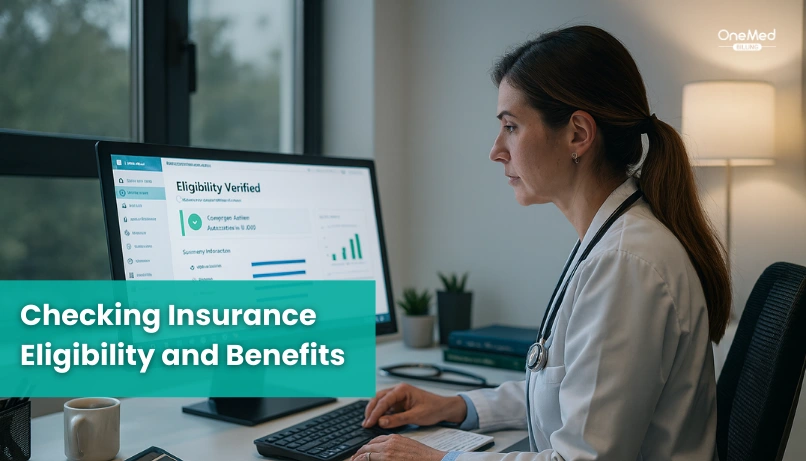
After registration, the next step is to confirm whether the patient’s insurance is active and what it actually covers. This process, called eligibility and benefits verification, makes sure the visit or procedure won’t turn into a denied claim later.
Here’s what your staff should look at:
- Is the insurance plan active on the date of service?
- Does it cover the provider and the type of visit or procedure?
- What co-pay, deductible, or coinsurance applies?
- Is prior authorization or a referral required?
Skipping this step often leads to surprises. For example, if insurance coverage ended last month or if the service isn’t covered, the claim will be denied and the patient may get stuck with the bill. That creates frustration for both sides.
When eligibility is checked in advance, patients know their out-of-pocket costs upfront, and practices avoid wasted time chasing denied claims. This one step alone can prevent a large share of billing headaches.
3. Recording Charges and Documentation
Once the patient is seen, every service provided needs to be recorded. This step, often called charge capture, is where the details of the visit are documented so they can later be turned into billable claims.
This includes exams, lab tests, procedures, medications, or supplies used during the encounter. The provider’s notes should clearly explain what was done and why it was needed. Strong documentation supports the medical necessity of the service, which is exactly what payers look for before approving payment.
When documentation is incomplete or vague, claims can be delayed, denied, or underpaid. For example, if a provider writes “test done” without specifying which test or why, the coder won’t have enough information to choose the right code.
Good documentation not only protects revenue but also helps with compliance and creates a more accurate medical record for the patient’s future care. Training providers to record clear, detailed notes at the time of service makes the rest of the revenue cycle much smoother.
4. Medical Coding and Entering Charges
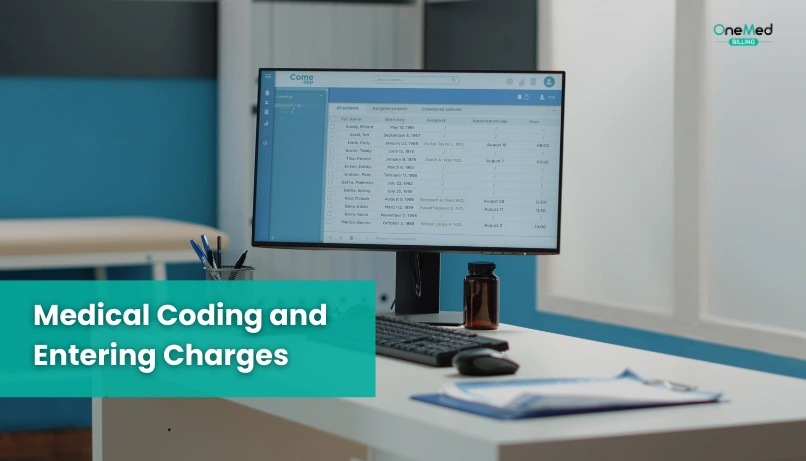
After the visit is documented, the next step is to turn that information into standard medical codes. Coders review the provider’s notes and assign the right ICD-10 codes for diagnoses, CPT codes for procedures, and HCPCS codes for supplies or services. If needed, modifiers are added to give extra detail about the service.
This stage is critical because the codes directly determine how much the practice gets paid. If the codes don’t match the documentation or payer rules, the claim may be denied or underpaid. For example, if a CPT code for a procedure is submitted without the matching ICD-10 diagnosis to prove medical necessity, the insurance company will likely reject the claim.
Once the codes are finalized, the charges are entered into the billing system. Accuracy here saves time and prevents rework later. A clean, properly coded claim moves through the system faster, reduces the risk of audits, and ensures the provider is reimbursed fairly for the care delivered.
5. Submitting Claims to Insurance and Processing
Once charges are coded and entered, the claim is ready to be submitted to the insurance company. This step is where all the information collected so far, patient details, insurance data, documentation, and codes, comes together into one claim form.
The goal is to send a clean claim, meaning it has no missing information, wrong codes, or formatting errors. Clean claims are processed faster and paid without delay. Many practices use claim scrubber tools to catch mistakes before the claim leaves the system.
When the payer receives the claim, it goes through a review process. The insurance company checks coverage, medical necessity, and coding accuracy. If everything matches their rules, the claim is approved for payment. If not, it can be rejected right away or denied later, which means more work for the billing team.
Submitting accurate, timely claims is one of the most important steps in the revenue cycle. A single error at this stage can slow down cash flow, while a clean submission keeps payments moving on schedule.
6. Posting Payments from Insurance Companies

Once the insurance company processes a claim, they sends back an Explanation of Benefits (EOB) or an Electronic Remittance Advice (ERA). This shows what was paid, what was adjusted, and what part of the bill is the patient’s responsibility. At this stage, the payment must be posted into the practice’s billing system.
Accurate payment posting is more than just entering numbers. It ensures the payment matches the services billed, adjustments are applied correctly, and outstanding balances are updated for the patient. If the insurer underpays or applies the wrong adjustment, it can be spotted here.
Timely posting is also important because it gives practices a clear picture of their financial health. By reviewing posted payments regularly, providers can quickly identify payer trends, like consistent underpayments for certain procedures and take action before revenue is lost.
7: Managing and Resolving Claim Denials
Even if everything seems right, some claims still come back denied by the insurance company. A claim denial means the payer reviewed the claim but decided not to pay for it. This can happen for many reasons:
- The service wasn’t covered under the patient’s plan.
- The claim was missing required information.
- The coding didn’t match the diagnosis (no medical necessity).
- Prior authorization wasn’t obtained.
- The claim was filed late.
Managing denials means your billing team carefully reviews the denial reason, corrects the error if possible, and resubmits the claim within the payer’s deadline. Payers are tightening rules, and denial rates are rising. Keeping up with latest RCM trends can help practices stay ahead. Resolving denials quickly is critical because every delayed claim slows down cash flow.
A practice that tracks denial trends, like noticing one payer always denies a certain code, can fix the root cause and prevent future denials.
8. Collecting Payments from Patients

The final stage of the revenue cycle is collecting the portion of the bill that the patient is responsible for, things like co-pays, deductibles, and balances left after insurance pays. This step often creates stress for both staff and patients if it isn’t handled clearly.
Successful patient collections start with transparency. Patients should know before or at the time of service what their financial responsibility will be. Clear, easy-to-read statements and upfront communication go a long way in avoiding confusion later.
Offering multiple payment options also makes a difference. Online payment links, text reminders, payment plans, and secure portals make it easier for patients to pay on time. When patients feel supported and understand their bills, collections improve and the practice avoids piling up unpaid balances.
Should You Outsource Revenue Cycle Management?
Managing the revenue cycle in-house can be a heavy lift. It requires trained staff, constant updates on coding and payer rules, and the right technology. For many practices, especially small to mid-sized ones, this becomes overwhelming and expensive. That’s where outsourcing can make sense.
Benefits of outsourcing RCM include:
- Access to certified billing and coding experts
- Fewer claim denials and faster payments
- Lower staffing and training costs
- Compliance with the latest Medicare, Medicaid, and commercial payer rules
- More time for providers and staff to focus on patient care instead of paperwork
Outsourcing is about making sure your practice gets paid correctly and on time. By letting experts handle the billing process, you reduce stress for your team and protect your revenue.
Conclusion
Managing the revenue cycle is one of the most important tasks for any healthcare practice. Each stage, whether it’s registration, eligibility checks, coding, or collections, plays a key role in keeping payments on track. When every step is handled with care and accuracy, practices avoid unnecessary delays and denials.
Keeping up with each stage of the revenue cycle isn’t easy, especially with changing rules and payer demands. If managing all of this in-house feels hectic, many providers choose to outsource to a trusted medical billing company and they will take care of your Revenue.
Frequently Asked Questions
Find quick answers to common questions about this topic, explained simply and clearly.
What are the stages of the revenue cycle?
Scheduling and registration → eligibility and benefits → charge capture and coding → claim submission and edits → payment posting and denials → A/R follow-up and patient billing → reporting and compliance.
What are the 4 P’s of the revenue cycle?
Pre-visit, point-of-service, post-visit, post-payment. (front end, mid-cycle, back end, and after payment work.)
What are the 4 stages of revenue?
Capture charges, bill claims, collect payments, correct and improve with denial work and analytics.
What is the revenue cycle model?
An end-to-end process that moves a patient encounter from scheduling to a zero balance by verifying coverage, coding and billing, posting payments, resolving denials, and managing A/R.

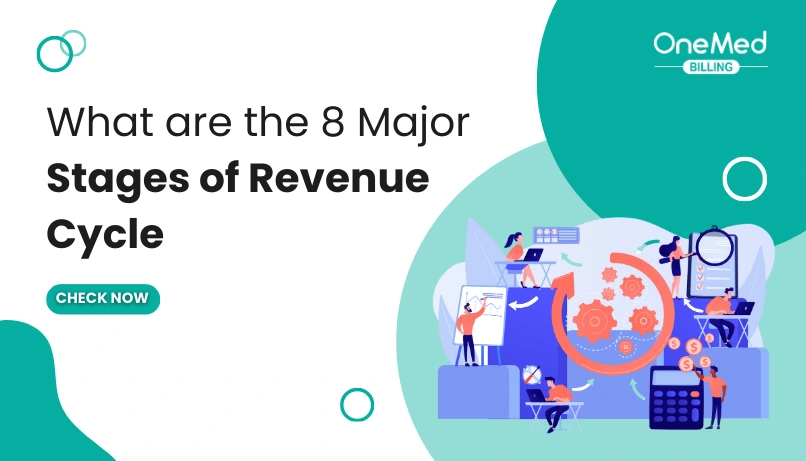
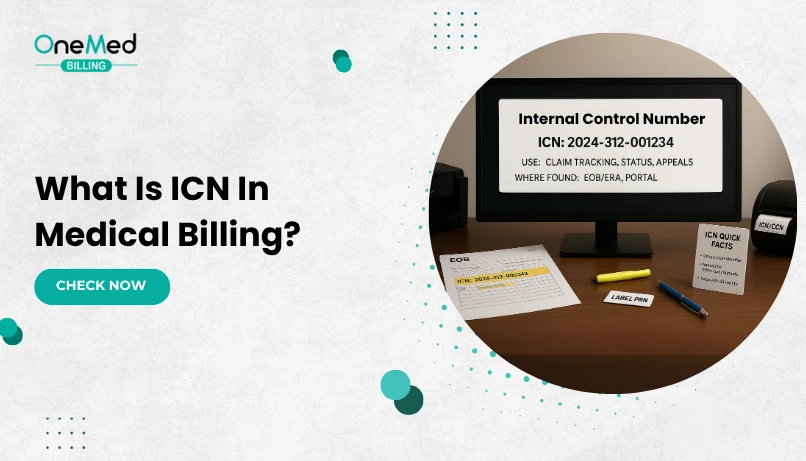
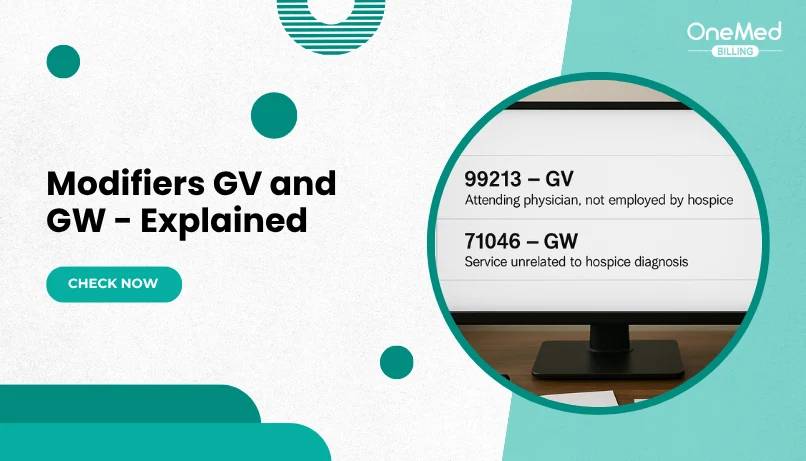
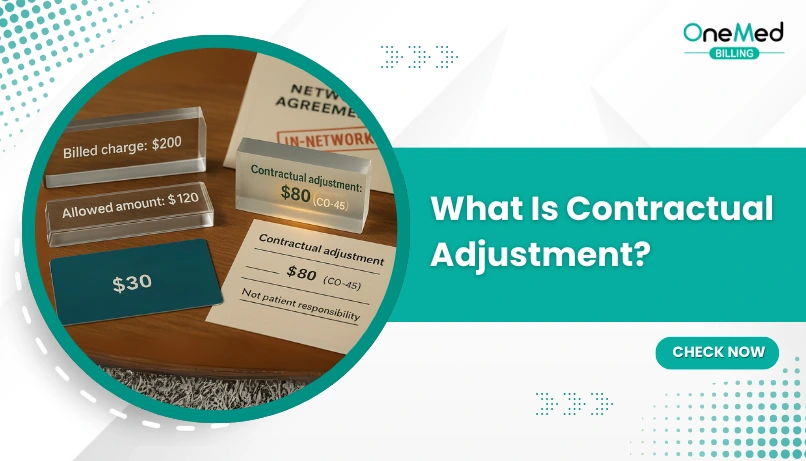


Comments (0)